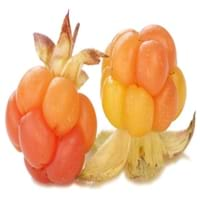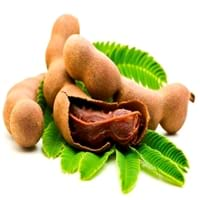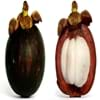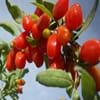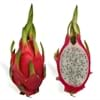Health Benefits
Cancer prevention, Heart care
Boosts immune system, Boosts respiratory health, Cancer prevention, Digestive aid, Piles treatment
General Benefits
Anti oxidant properties, Boosts immune system, Digestive aid, Improves blood circulation, Maintains healthy cholesterol level, Strengthens bones
Beneficial in improving nerve function, Protects against parasites and worms, Relieves pain
Skin Benefits
Anti-aging benefits, Reduces wrinkles, Skin rejuvenation
Anti-aging benefits, Brightens and lightens complexion, Exfoliates skin, Hydrates skin, Treatment of dark spots
Hair Benefits
Protects hair
Prevents hair loss
Allergy Symptoms
NA
Abdominal pains, Breathing difficulty, Dizziness, Eczema, Fainting, Hives, Itching, Nasal congestion, Swelling of face, Tingling sensation in mouth, Vomiting
Side Effects
Allergic reaction
Decrease in blood sugar levels, Induces acid reflux, Allergic reaction, Tooth decay, May form gallstones
Best Time to Eat
As a snack in the late afternoon, Don't consume at night and before bed, Eat the fresh ones, avoid mixing with any other foods, don't eat after meal., Morning time (before lunch)
Along with meal, As a snack in the late afternoon, Don't consume at night and before bed, Strictly avoid empty stomach
Vitamin A (Retinol)
Not Available
Vitamin B5 (Pantothenic Acid)
Not Available
Vitamin B6 (Pyridoxin)
Not Available
Vitamin B9 (Folic acid)
Not Available
Vitamin C (Ascorbic Acid)
Vitamin E (Tocopherole)
Not Available
Vitamin K (Phyllochinone)
Not Available
Lutein+Zeaxanthin
Not Available
Phytosterol
Not Available
Calories in Fresh Fruit with Peel
Not Available
Calories in Fresh Fruit without Peel
Not Available
Calories in Frozen Form
Not Available
Calories in Dried Form
Not Available
Calories in Canned Form
Not Available
Not Available
Season
Winter
Spring, Summer
Varieties
Not Available
PKM 1, Urigam, Hasanur, Tumkur prathisthan, DTS 1 and Yogeshwari
Color
Orange, Pink, Yellow
Brown, Reddish-brown
Inside Color
Orange
Brown
Shape
Oval
Curving Cylinder
Taste
Sweet-Sour
Sour-Sweet
Origin
Arctic Tundra
Africa
Soil Type
Loam, Well-drained
Loam, Sandy, Sandy loam, Well-drained
Climatic Conditions
Cold, Warm
Humid to dry, Rainfall, Warm to hot climate
Facts about
- Cloudberry is also called as bakeapple, knotberry , knoutberry, aqpik or low bush salmonberry.
- In Nordic countries, cloudberries are used to make traditional liqueurs.
- Tamarind is used to prevent body odor.
- African children use the tamarind seeds in games.
- No cases of tamarind toxicity or allergy reported till date.
Top Producer
Norway
India
Other Countries
Canada, Denmark, Finland, Iceland, Sweden, United States of America
Africa, Australia, Brazil, China, Mexico, Nigeria, Sudan, Taiwan
Top Importer
Norway
United States of America
Top Exporter
Finland
Thailand
Botanical Name
Rubus chamaemorus
Tamarindus indica
Synonym
Not Available
Tamarindo, tamarindus
Subkingdom
Tracheobionta
Tracheobionta
Division
Magnoliophyta
Magnoliophyta
Class
Magnoliopsida
Liliopsida
Species
R. chamaemorus
Tamarindus indica
Generic Group
Not Available
Tamarind Sub
Compare Cloudberry and Tamarind
It is important compare Cloudberry and Tamarind as both the fruits have a different nutritional value. Their comparison can be done on the basis of their vitamin and mineral content, calories, benefits as well as characteristics, making it easier for us to choose the best fruit for our diet. Their general health benefits are as follows:
Cloudberry Benefits: anti oxidant properties, boosts immune system, digestive aid, improves blood circulation, maintains healthy cholesterol level and strengthens bones.
Tamarind Benefits: beneficial in improving nerve function, protects against parasites and worms and relieves pain.
Fruits are also used as a remedy for various hair problems. The hair benefits of Cloudberry are: protects hair and hair benefits of Tamarind are: prevents hair loss. Some fruits are known to cause allergic reactions. The allergy symptoms of first fruit are: na and the symptoms of second fruit are: abdominal pains, breathing difficulty, dizziness, eczema, fainting, hives, itching, nasal congestion, swelling of face, tingling sensation in mouth and vomiting. Get sorted Cloudberry vs Tamarind comparison with the help of fruit comparison tool by fruitvs.com.
